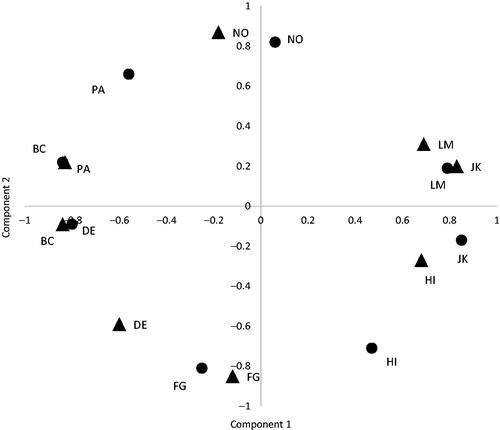Figures & data
Table 1. Demographic and clinical characteristics of the clinical samples (AN and BN) and the controls (C).
Table 2. Values of Cronbach’s alpha (α) of IIP-64, total scale and subscales, in patients with and ED and total group.
Figure 1. Component plot of PCAs with varimax rotation based on ipsatized subscale scores in the ED sample (dots) and controls (triangles). PA: domineering/controlling; BC: vindictive/self-centered; DE: cold/distant; FG: socially inhibited; HI: non-assertive; JK: overly accommodating; LM: self-sacrificing; NO: intrusive/needy.

Table 3. Bivariate correlations of IIP-64 subscales and EDI-3 composite scales in the ED sample, based on raw scores and ipsatized scores (in parenthesis).
Table 4. One-way analysis of variance (ANOVA) and differences of means (M), standard deviations (SD) and effect sizes (Cohen’s d) for patients with AN, BN and controls (C).
